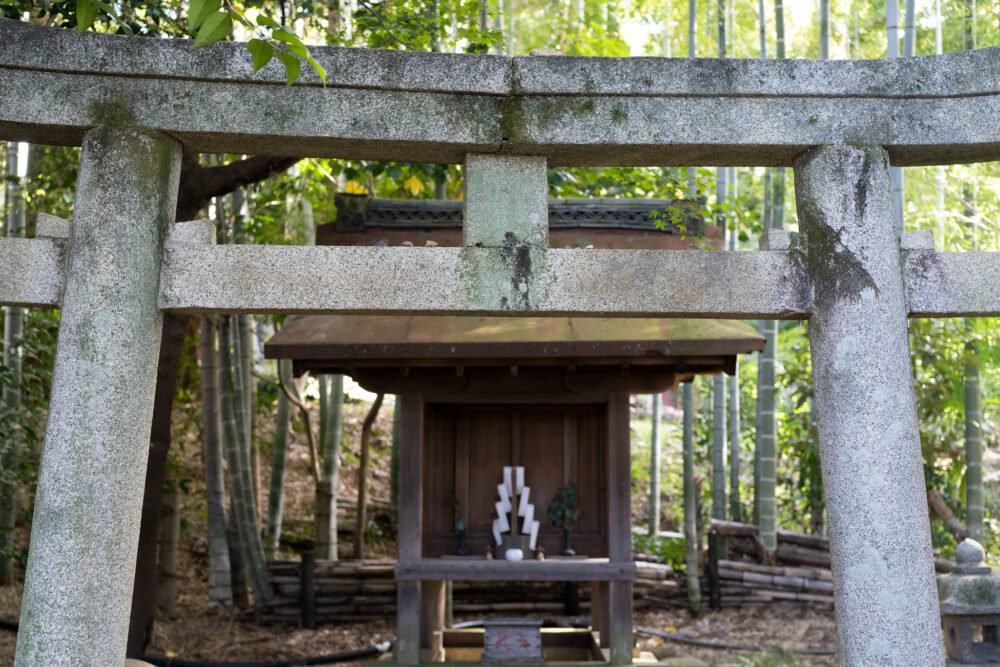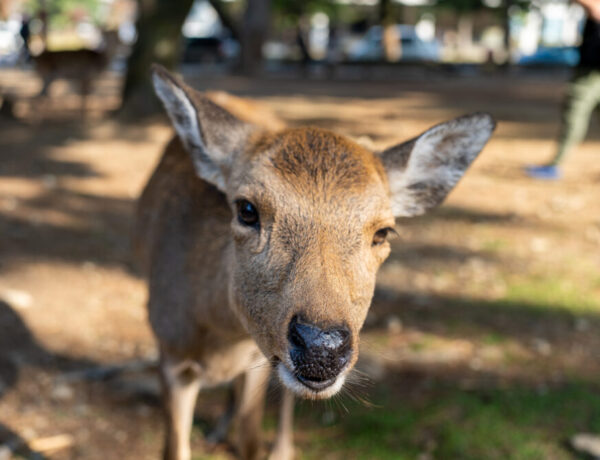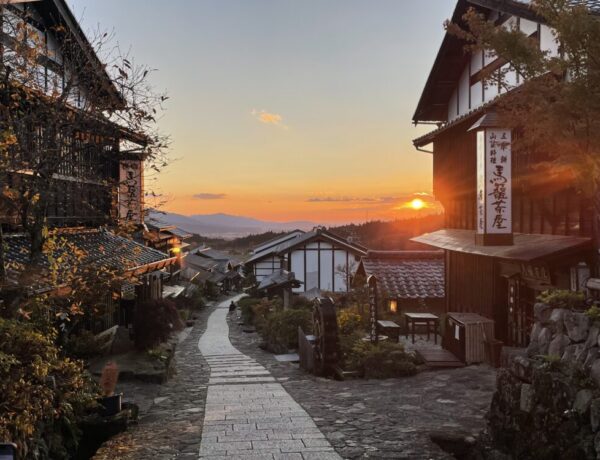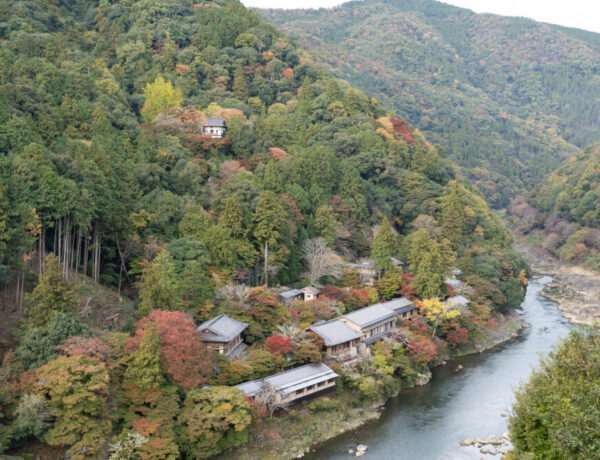This post may contain affiliate links. This just means I may receive a small commission at no extra cost to you for helping them promote their product or service. I don’t endorse any services I don’t personally use or recommend.
Kyoto is the number one tourist destination in Japan. It undoubtedly tops your list of must-sees. With bright red Shinto Shrines, traditional Japanese architecture, an errant geisha roaming the nighttime streets, and countless lovely temples and shrines for the Japanese residents in Kyoto that identify as Buddhist. That’s not to mention the cherry blossoms of spring and vibrant foliage of fall. Kyoto is also known as one of the best destinations to experience a “traditional” Japanese tea ceremony. But finding one that’s truly traditional and authentic can be a challenge in a city so inundated with tourists.
We loved our tea ceremony experience at Shoren-In. One of the few Buddhist temples still in use by the practicing Japanese, I felt it offered a better environment than the guided tea tourist attractions you’ll find in town.
And it’s cheaper too.

How to Experience an Authentic Japanese Tea Ceremony in Kyoto
Here’s a quick breakdown that will help you choose whether or not a tea ceremony is the right attraction to add to your Kyoto bucketlist.
What is a tea ceremony?
A “tea ceremony” is essentially the formal ceremonial production and consumption of matcha tea. As with everything else in Japan, there is a “right” way to make, accept, and drink high-quality matcha tea.
For starters, it’s prepared by a tea master who whips the green matcha powder into a froth with a small whisk and ladles hot water from a black cauldron in the small tea room. It’s usually drunk relatively quickly while enjoying beautiful views of nature. Many places pair it with a traditional Japanese sweet.



The entire process takes about 45 min (a little less sometimes) and I felt it had a lot in common with meditation. While many tea ceremonies will guide you step by step through the proper bows and bowl-holding techniques the “real” ones usually won’t which leaves you to just follow the cues of others or hope that your particular tea master happens to speak some English.
The matcha itself is delicious. High-quality grassy tea that you can’t get outside of Japan. Even Evan who doesn’t usually care for the stuff enjoyed it.
Why you should choose Shoren-In Temple.
We got turned off by the guided tour tea ceremonies where you can by appointment in the old town join a group to be served tea. But to us, this is such a traditional practice and we wanted it in the most natural setting. Without staged kimonos, English explanations, and the potential to be joined by 10 other Americans with all their questions.
Then we found out that Shoren-In, a lovely Buddhist temple with a zen garden, old art, and bamboo-lined walking trail had a tea house that on certain days of the month in Spring and Fall was open to the public.
Because this is a functional temple, run by a tea master, and not popular with international tourists we felt we could get the best experience here. And we did. We also got to enjoy a delicious Japanese dessert.
Be sure to check their website for dates that the tea ceremonies are possible. It’s usually three days per week in the Fall and Spring.

Cost of the Traditional Japanese Tea Ceremony
At the tea house tours, you’ll likely spend at least 3,000 yen or $20 per person for a group session. This means you’ll have many others joining you. Private sessions start at around 5,000 yen per person. If you want to wear kimono while you do so, then expect to pay more.
At Shoren-In, including the price to visit the temples we each paid 1,700 yen or about $10.
Not only was it half price but it was also set in a lovely garden location rather than in town.
What you need to know before you attend a traditional Japanese tea ceremony.
As I mentioned this is a pretty rigid affair so there are some rules to follow for all ceremonies.
- Dress conservatively and if you have tattoos try and keep them covered.
- Follow the cues of the host. Bow when they bow.
- Always turn the bowl/cup back to face them when you are finished.
- Drink with two hands cupping the bowl.
- Finish your matcha. Even if you hate it.
- Stay quiet throughout the ceremony.
- Try to sit as the tea master does- on your knees with your feet tucked under.
- The ceremony at temples will likely not be in English. If that’s important to you then perhaps you should choose one of the shops in town. (We don’t speak Japanese but we’re able to follow the cues easily!)
Reminder! Be sure to check the Shoren-In schedule before you show up for tea. Not every day is a tea ceremony day. If you’re unlucky during your stay and there are no days for tea then check a few other temples in the area for a similar experience.
For us, this was the best possible tea ceremony. For $20 total we got traditional tea, dessert, a lovely ambiance, a relaxing garden stroll, and learned a bit about tea preparation. We also enjoyed it because we were the only tourists from abroad and instead were joined by domestic travelers and a few local Kyoto residents who we were able to chat with after the traditional Japanese tea ceremony was over.
Save this post for Later!







No Comments